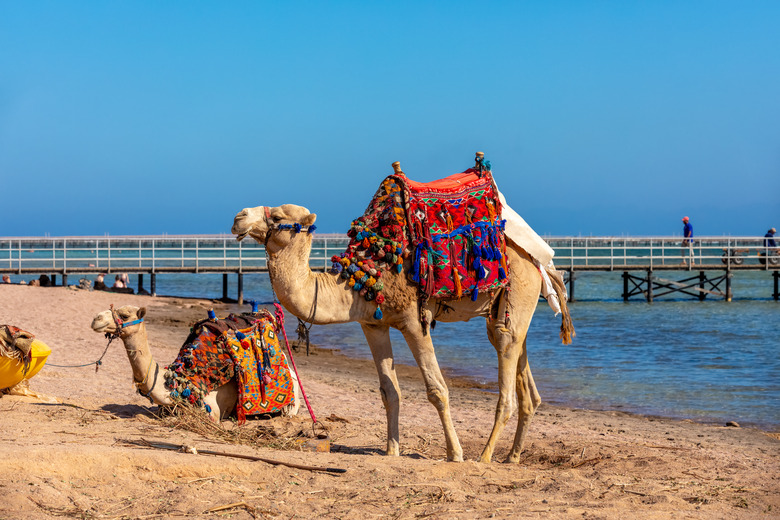Animal Adaptations To Hot Climates
The hot climate of a desert is a testing environment for living creatures. The hot days and cold nights mean they need to be well equipped to deal with the extremes. These factors, along with the hot climates' lack of water and shelter, has resulted in animals' adapting their bodies to suit the climate.
Behavioral Patterns
Behavioral Patterns
Animals in hot climates have adapted behavioral patterns to avoid the hottest part of the day or season. For example, the Costa's hummingbird breeds in late spring and leaves the area for the hot summer. Meanwhile, reptiles and mammals are only active at dusk or night. Burrowing is also a useful mechanism. Lizards bury themselves in the sand during the day, while rodents create burrows and plug the entrance to keep out hot air.
Dissipating Heat
Dissipating Heat
To keep cool, animals have created mechanisms to encourage air circulation around their bodies and to dissipate heat. Camels have a thin layer of fur underneath their bellies to help lose heat, while a thicker layer across theit humps shade them. Owls, nighthawks and poorwills fly around with their mouths open so water is evaporated from the mouth. Vultures urinate on their legs so it cools them down as it is evaporated. They can also fly high in the air to experience cooler air flows.
Water Adaptations
Water Adaptations
It is a common misconception that a camel stores water in its hump. In fact, a camel has adapted to the heat by being able to go for a long time without drinking water at all. Mammals have adapted to extract water from cacti. Small insects obtain nectar from stems of plants, while larger animals derive water from leaves. Interestingly, kangaroo rats burrow into holes, and recycle the moisture from their own breath to get retain water. As the rat exhales, water condenses on its nasal membrane. This process means the rat can conserve a lot of water so it doesn't need to drink for day.
Other Adaptations
Other Adaptations
Some animals have adapted in unique ways to survive in hot climates. Some rodents have additional tubules in their kidneys to remove extra water from their urine so that it can be returned to the blood stream for hydration. Reptiles and birds have adapted by excreting uric acid as a white compound that lacks moisture. This means they can retain vital water for their bodily functions. Other animals, like camels, also have a large surface-area-to-volume ratio to get rid of heat effectively.
Cite This Article
MLA
Jones, Verity. "Animal Adaptations To Hot Climates" sciencing.com, https://www.sciencing.com/animal-adaptations-hot-climates-8586200/. 22 November 2019.
APA
Jones, Verity. (2019, November 22). Animal Adaptations To Hot Climates. sciencing.com. Retrieved from https://www.sciencing.com/animal-adaptations-hot-climates-8586200/
Chicago
Jones, Verity. Animal Adaptations To Hot Climates last modified March 24, 2022. https://www.sciencing.com/animal-adaptations-hot-climates-8586200/
